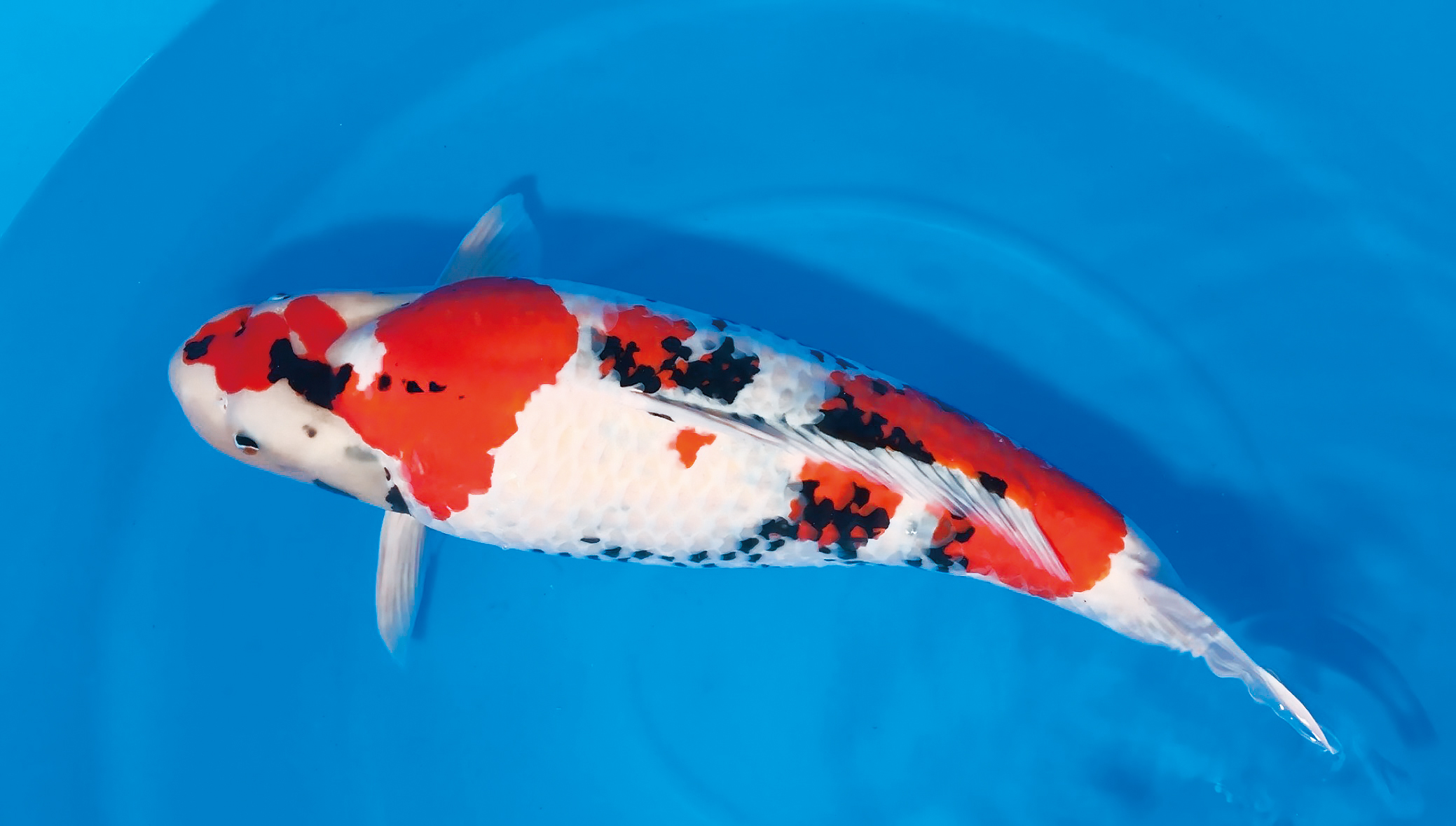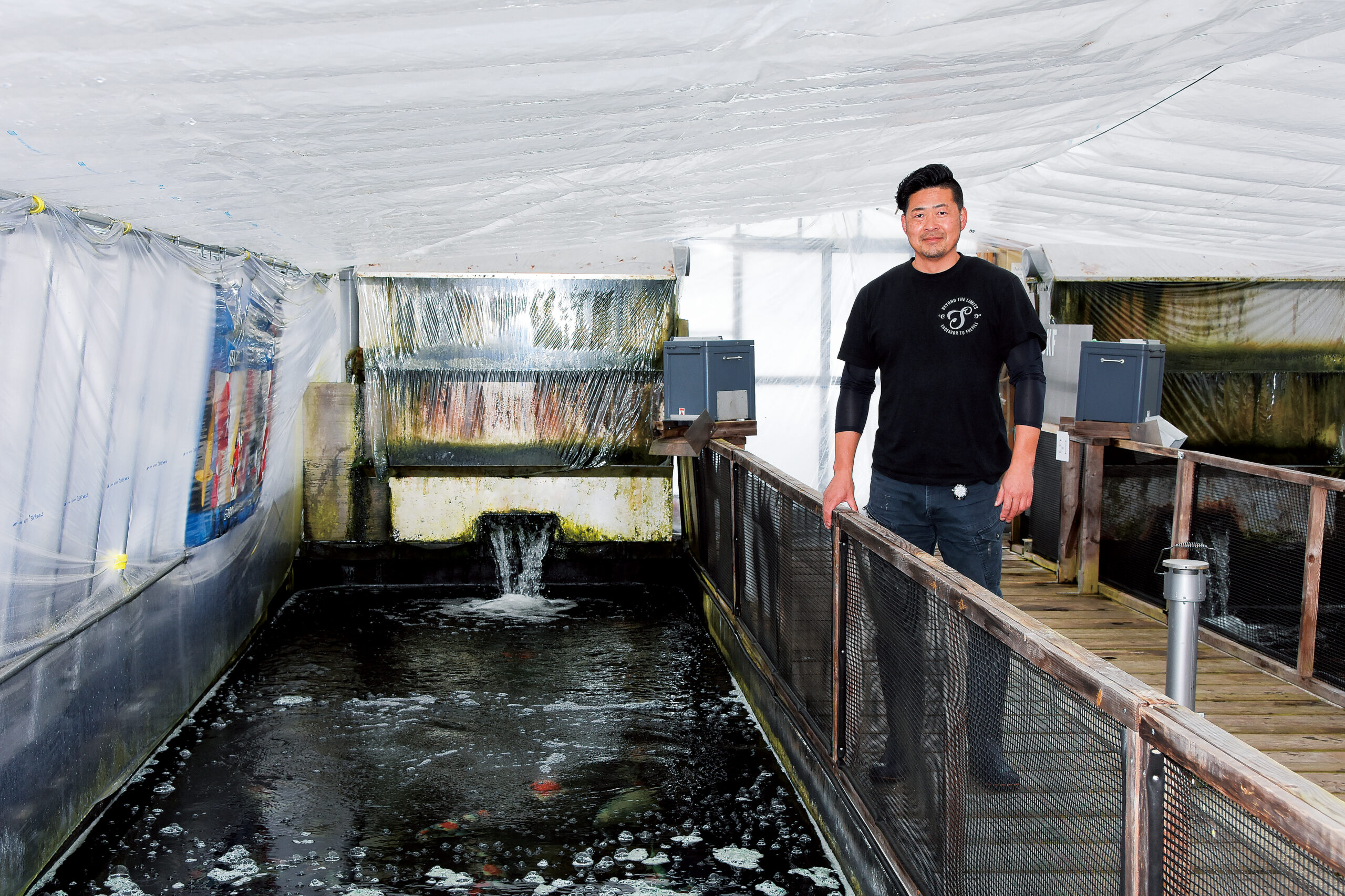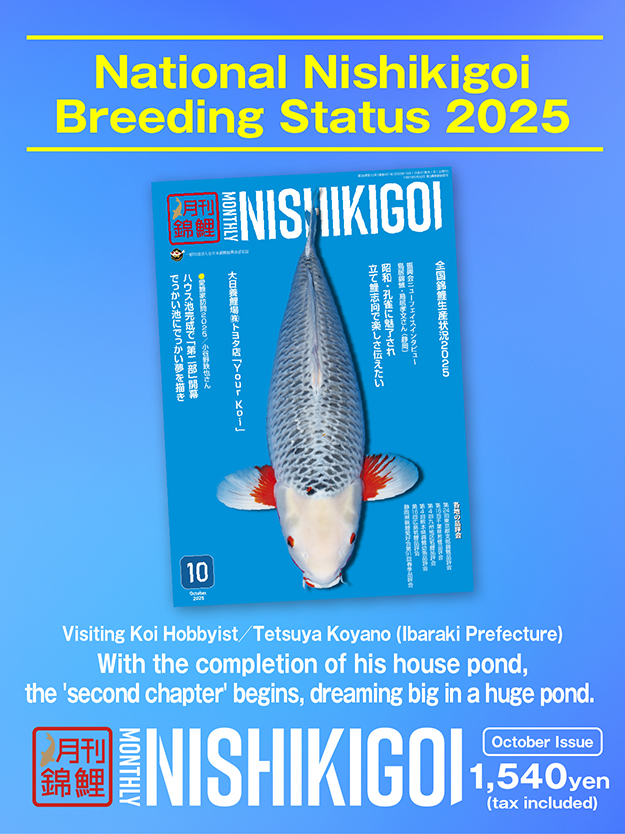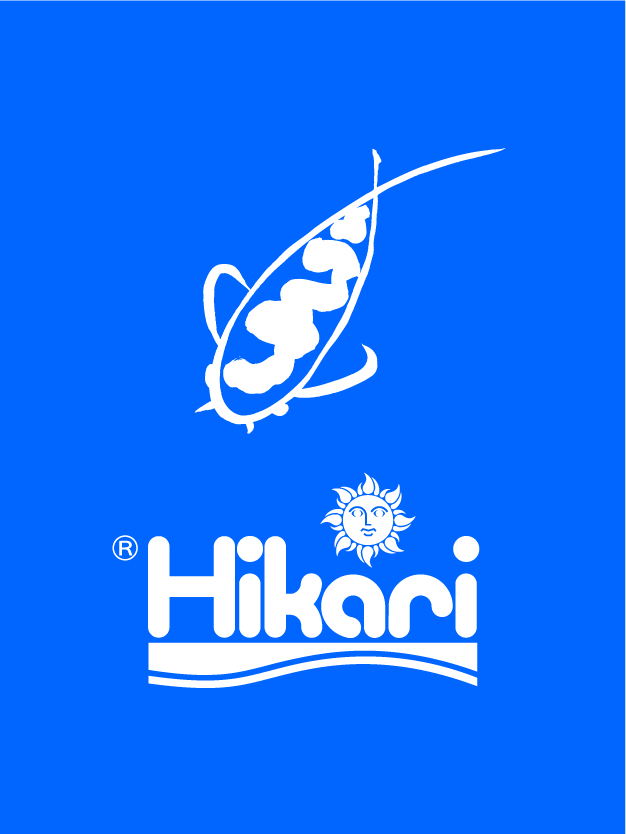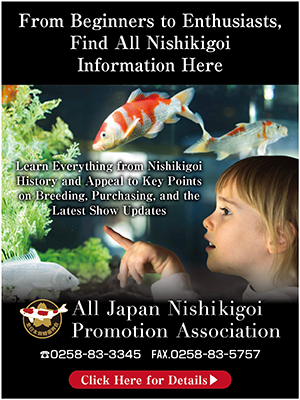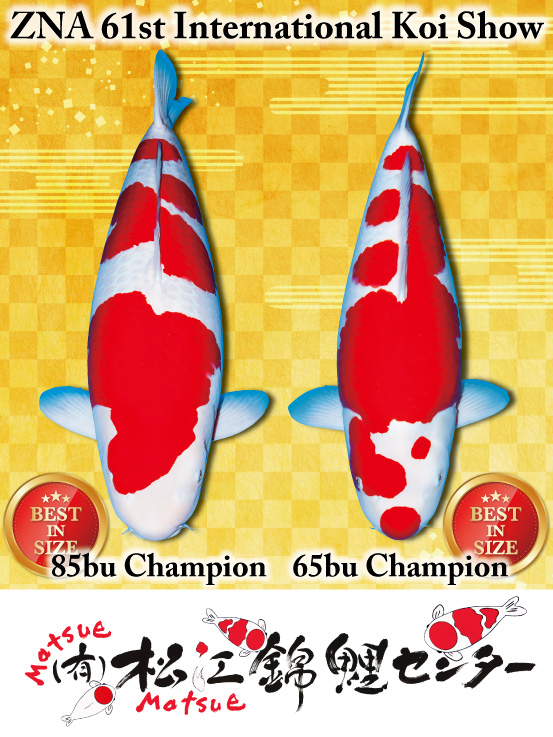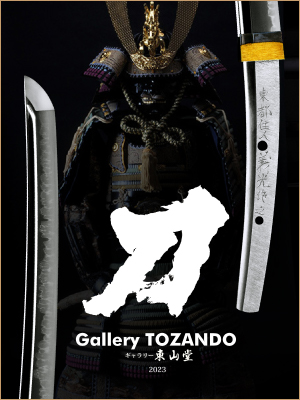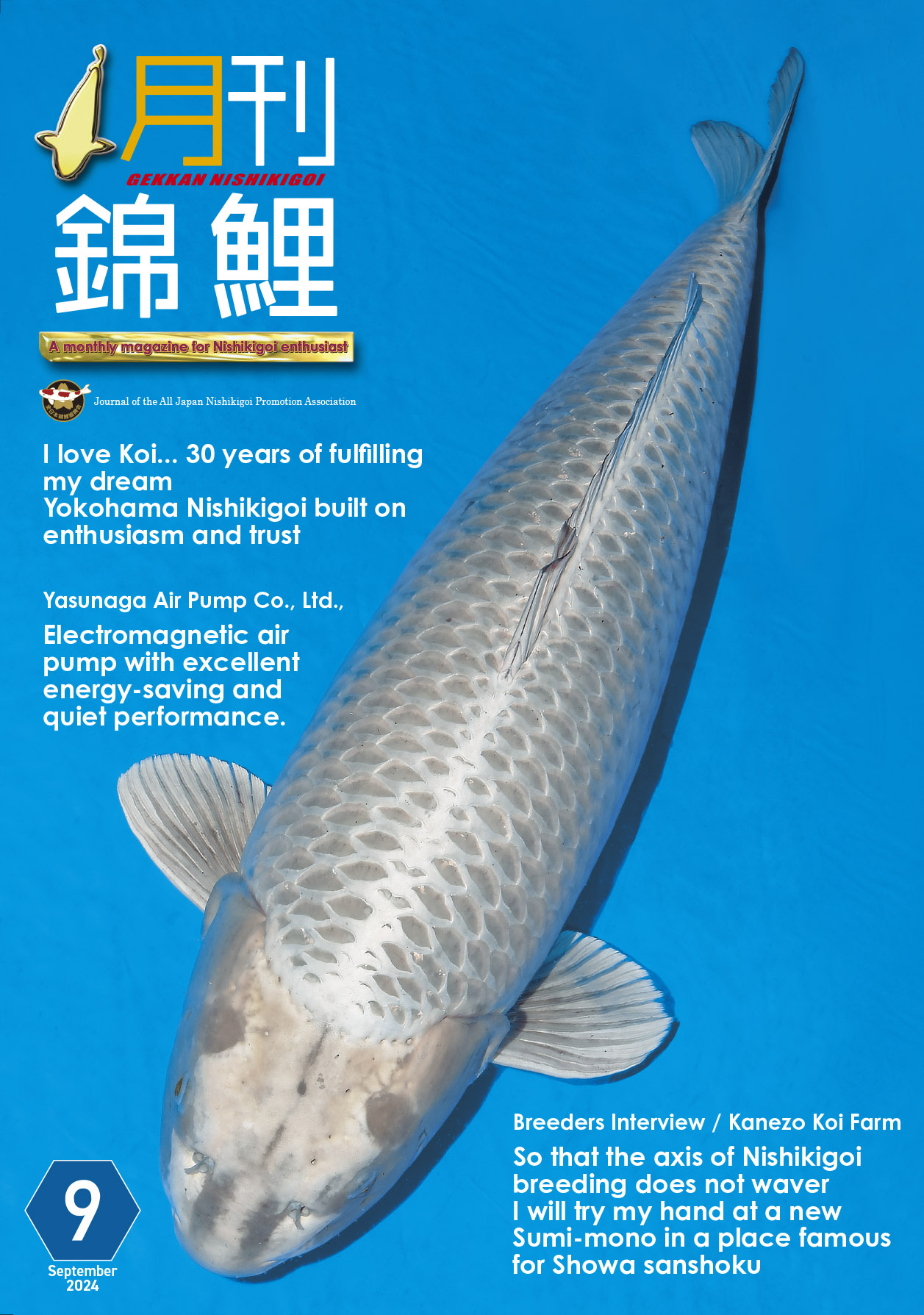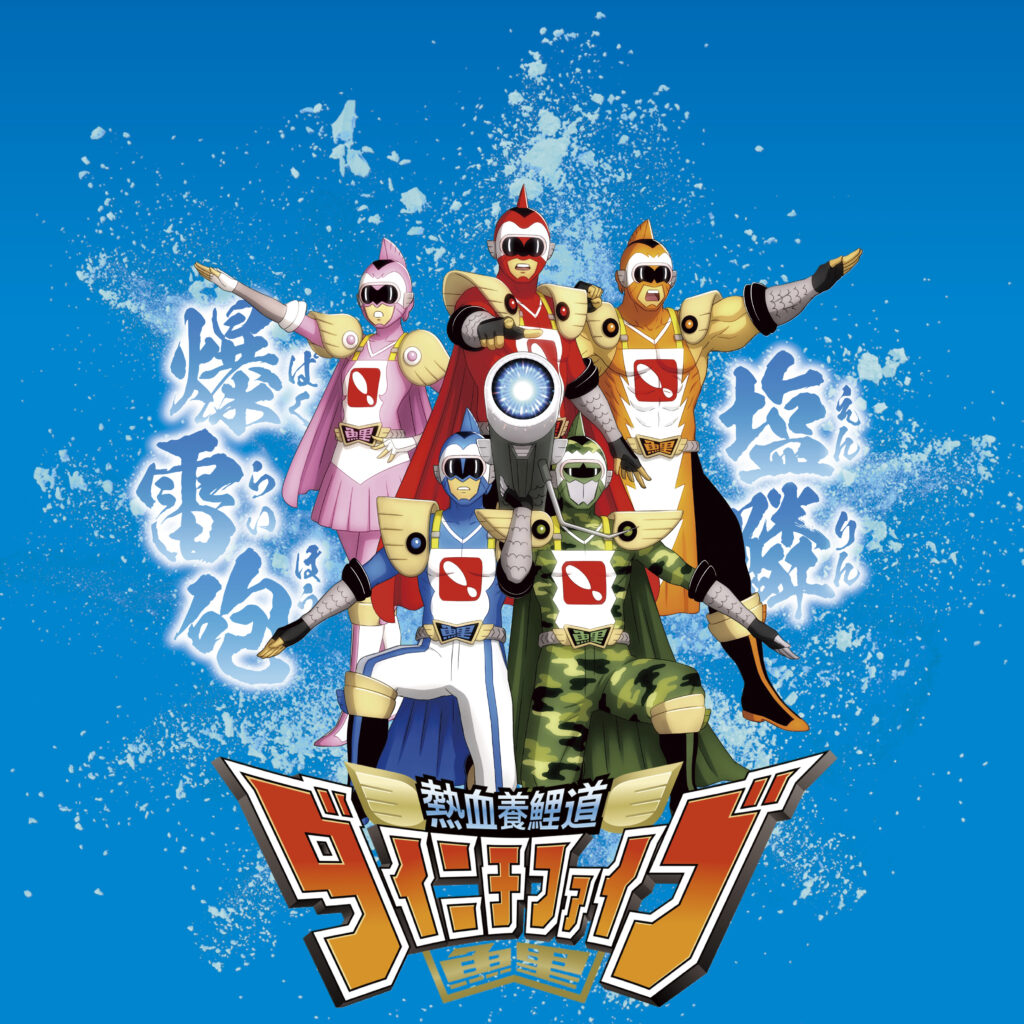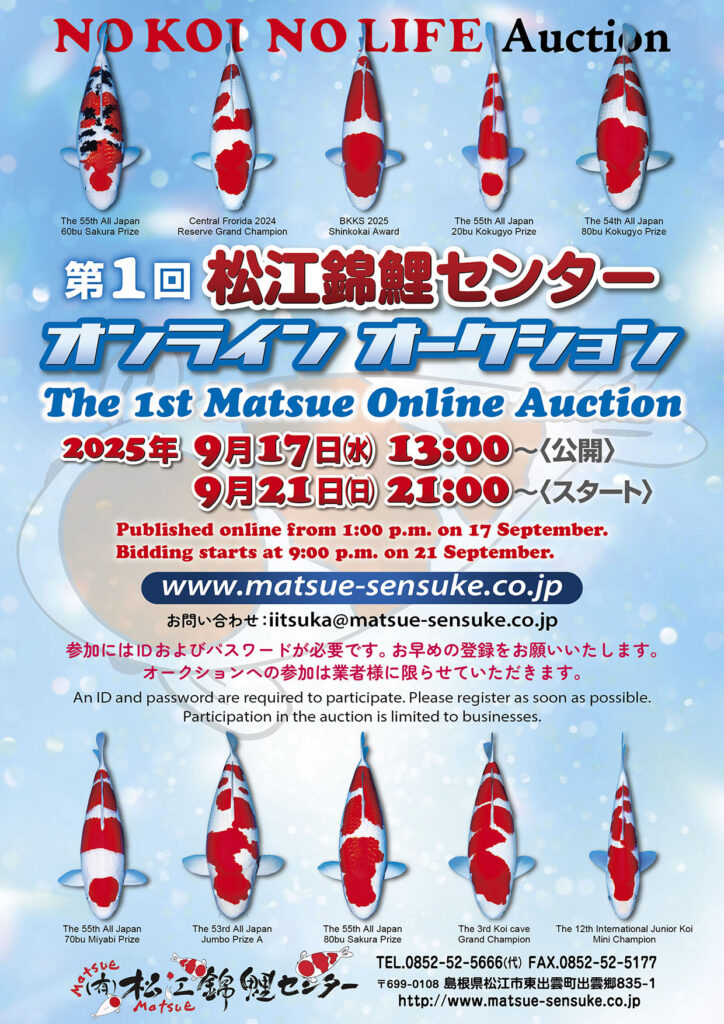First Spawning from Parents Bred from Kohaku
A Step Towards Establishing a New Line
― Is most of your production Showa, with a little bit of Pearl (Ginrin)?
Sekiguchi: Yes, that’s right. There are some ponds where we just can’t produce Showa, so we put Pearl there.
― Do you only produce these two varieties, and not Kohaku or Sanshoku, as has been the case since ancient times?
Sekiguchi: If you want to produce Kohaku or Sanshoku, you absolutely need a large area to produce good ones… If we try to make other varieties, the number of Showa would decrease, so I thought it would be better to focus solely on Showa.
― Do you use more of your own produced parent koi or those from other breeders?
Sekiguchi: It’s difficult now, so we don’t bring in many from outside. We are managing by cleverly combining several of our own separate bloodlines.
― How many different bloodlines of parent koi do you have?
Sekiguchi: We have four right now. There are bloodlines that tend to produce good body shapes, those that have interesting sumi movement, and those that have beautiful red, among others.
In addition, as a new line, we have a second-generation Showa (Photo ⑦) that was created by crossing a Dainichi Kohaku with our Showa, and we plan to spawn from it for the first time this year. It’s thick-bodied and has a “Daruma” face, so I’m really looking forward to it. It has a rugged, thick skin, like koi from the old days.
― We hear about such attempts often recently. Kohaku and Showa, or Sanshoku and Showa.
Sekiguchi: However, ideally, if the female parent is Showa and you cross it with a Kohaku male, Showa tend to emerge more easily. Ours ended up being the other way around, though…
― Can you predict what kind of Showa will emerge if it has Kohaku blood?
Sekiguchi: That’s a bit difficult… that female doesn’t completely look like a Showa yet. It will take time until they become commercially viable, but I think if we take one more step, they’ll properly emerge as Showa.
― It’s not like the project will be complete after this year’s spawning; you’re looking further ahead.
Sekiguchi: I hope to create a new line. The original Kohaku had amazing red, a different kind of red than Showa, so I used it wanting to incorporate that into Showa, but the offspring’s body became more attractive. It’s about 91cm now, so we can finally spawn from it this year.
― What kind of males will you cross with that female?
Sekiguchi: I plan to try about three different types of males. Pattern and body are very contradictory.
― What’s your total production volume in terms of number of spawns?
Sekiguchi: A little over 10 spawns in total. We have few fry ponds.
― Why not increase the number of ponds?
Sekiguchi: This area is a famous rice-producing region for branded rice, so there are various difficulties.
― I see. There are such circumstances in Minami Uonuma. If you have few fry ponds, you have to be very strict with selection to fit them all in, right?
Sekiguchi: On the contrary, we leave more. The ponds for gathering fry are relatively large. If you put too few there, they grow too big too quickly, and the patterns often disappear suddenly. So, we intentionally put a larger number in.
― It’s not necessarily better to keep them sparsely?
Sekiguchi: You can produce better ones by keeping them sparsely. For example, if you have fewer than 200 every pond for autumn harvesting, you can produce large and good ones. But then the numbers are small, and since there’s also male and female selection by spring, not many remain. If we did that here, it would become a hobby.
Finally, you never really know with tosai. So, we leave a lot. For example, we remove koi with too black a face or a completely black body as they’re commercially difficult, but when we select from the pond where we’ve gathered only such koi after a while, we find some that we “definitely didn’t put in there,” so it’s truly unpredictable.
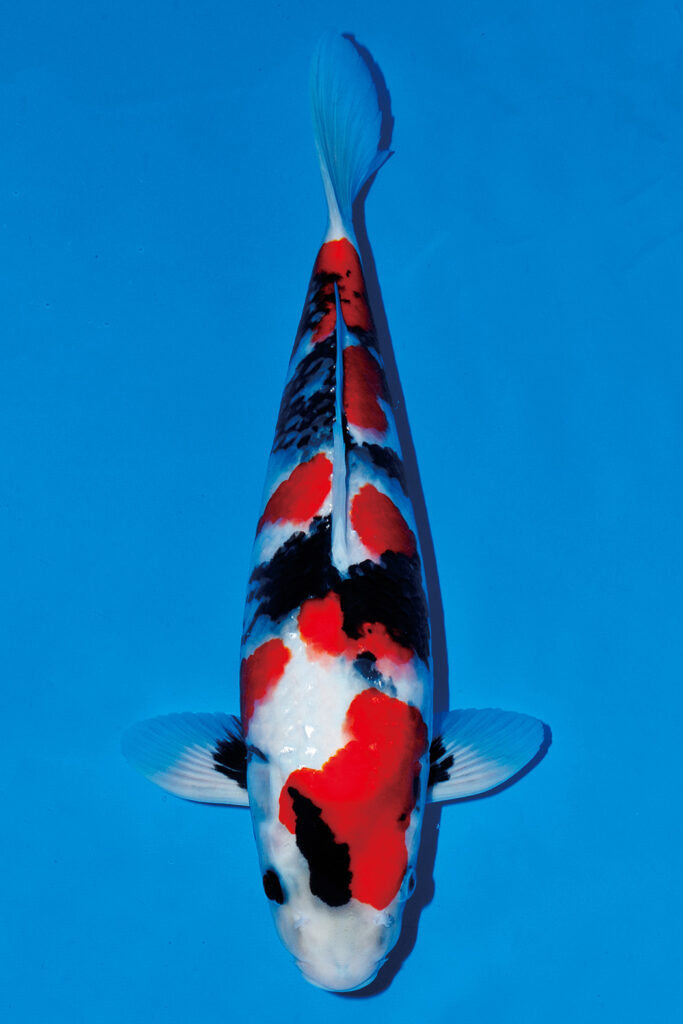
Young Champion

Grand Champion

